Scotland has been and always will be a firm favourite with our family whether we are learning about it or physically touring it. We celebrate Burns Night every year and in April 2023 we went on a two week trip all round Scotland with our 4 kids in our motorhome. With its rich cultural heritage and captivating traditions, it provides a fascinating topic for exploration, especially on Burns Night the 25th January. In this blog post, we will delve into a simple and enjoyable lesson plan designed to help you and your children learn more about Scotland and to celebrate Burns Night. Whether you’re incorporating this mini-unit study into your home education schedule or making it an annual family tradition, the lesson can be tailored to suit the resources you have at hand and accommodate your teaching approach and your children’s diverse learning styles. Before we jump into the lesson plan, let’s discover why learning about Scotland is exciting, how to celebrate Burns Night, and the cultural significance of Robert Burns.

WHY LEARN ABOUT SCOTLAND?
Scotland, a land of rugged landscapes, historic castles, and vibrant traditions, offers a captivating exploration for learners of all ages, including the adults. Learning about Scotland is an awe-inspiring experience, as it offers a rich tapestry of history, folklore, and natural wonders. From the legendary tales of castles and brave knights to the enchanting myths of mystical creatures like the Loch Ness Monster and the Kelpies, Scotland’s cultural heritage is a treasure trove of imagination. The vibrant traditions of Highland games, kilts, and bagpipes add a splash of excitement, while exploring the breathtaking landscapes, including rolling hills, ancient forests, fairy pools, and serene lochs, can spark a sense of wonder and adventure. Additionally, delving into the unique language, delicious cuisine, and the lively celebrations like Hogmanay (New Year’s Eve) and Burns Night (25th January) provides a delightful cultural immersion. Learning about Scotland becomes a journey of discovery, where children can unravel the mysteries of a land steeped in history, folklore, and natural beauty, creating lasting memories and fostering a lifelong love for exploration. Can you tell I love this country?
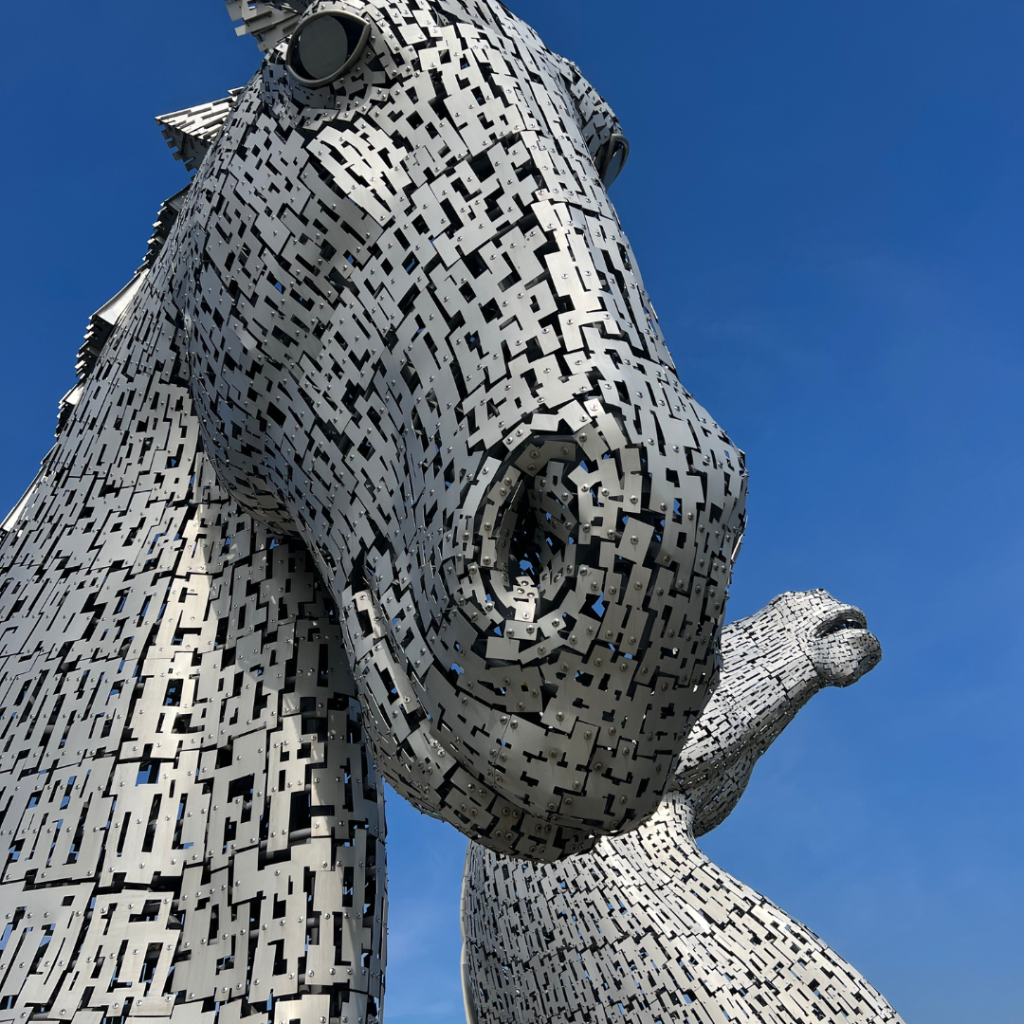
CELEBRATING BURNS NIGHT:
Burns Night, celebrated annually on January 25th, commemorates the life and works of Scotland’s national poet, Robert Burns. The evening typically involves a festive dinner known as a Burns Supper, where participants enjoy traditional Scottish dishes, recite Burns’ poetry, and pay tribute to his legacy. Incorporating Burns Night into your unit study adds a delightful cultural touch to the exploration of Scotland.
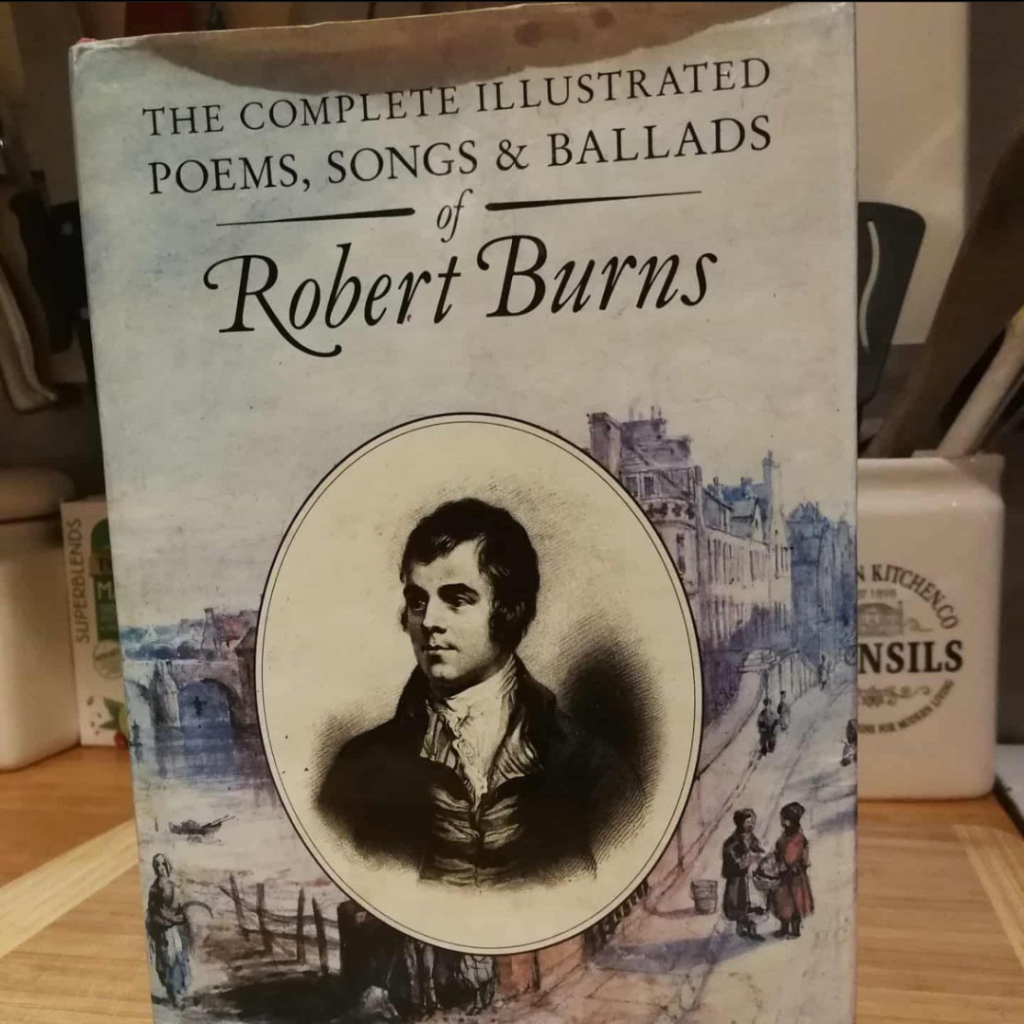
WHO WAS ROBERT BURNS?
Robert Burns, also known as the Bard of Ayrshire, is widely regarded as the national poet of Scotland. Born in 1759, Burns’ poetry and songs reflect his love for Scotland, its people, and its landscapes. His works, including “Auld Lang Syne” and “To a Mouse,” are celebrated globally, making him a cultural icon.
SCOTLAND AND BURNS NIGHT LESSON PLAN
Now that we’ve highlighted the appeal of learning about Scotland and the significance of Burns Night, let’s move on to our Introduction to Scotland and Burns Night Lesson Plan. This plan aims to provide a brief overview of Scotland’s culture, geography, and traditions, with a special focus on Burns Night. Tailored for children aged 6 to 12, the lesson is designed to be engaging, informative, and inclusive of various learning styles.
LESSON OBJECTIVES:
- Learn about Scotland’s geography, landmarks, and traditions.
- Understand the significance of Burns Night and who Robert Burns was.
- Explore Scottish culture through music, dance, and traditional attire.
- Create a Scotland-inspired craft or sweet treat.
- Participate in a simplified Burns Supper experience.
BASIC SUPPLIES:
Adapt the suggested supplies based on what you have available at home. This post contains affiliate links, which means Barefoot Bliss and Books make a small commission at no extra cost to you. See the full disclosure here.
Books on Scotland:
Choose books that cover Scotland’s geography, history, and culture. Consider titles like “The History of Scotland for Children“.
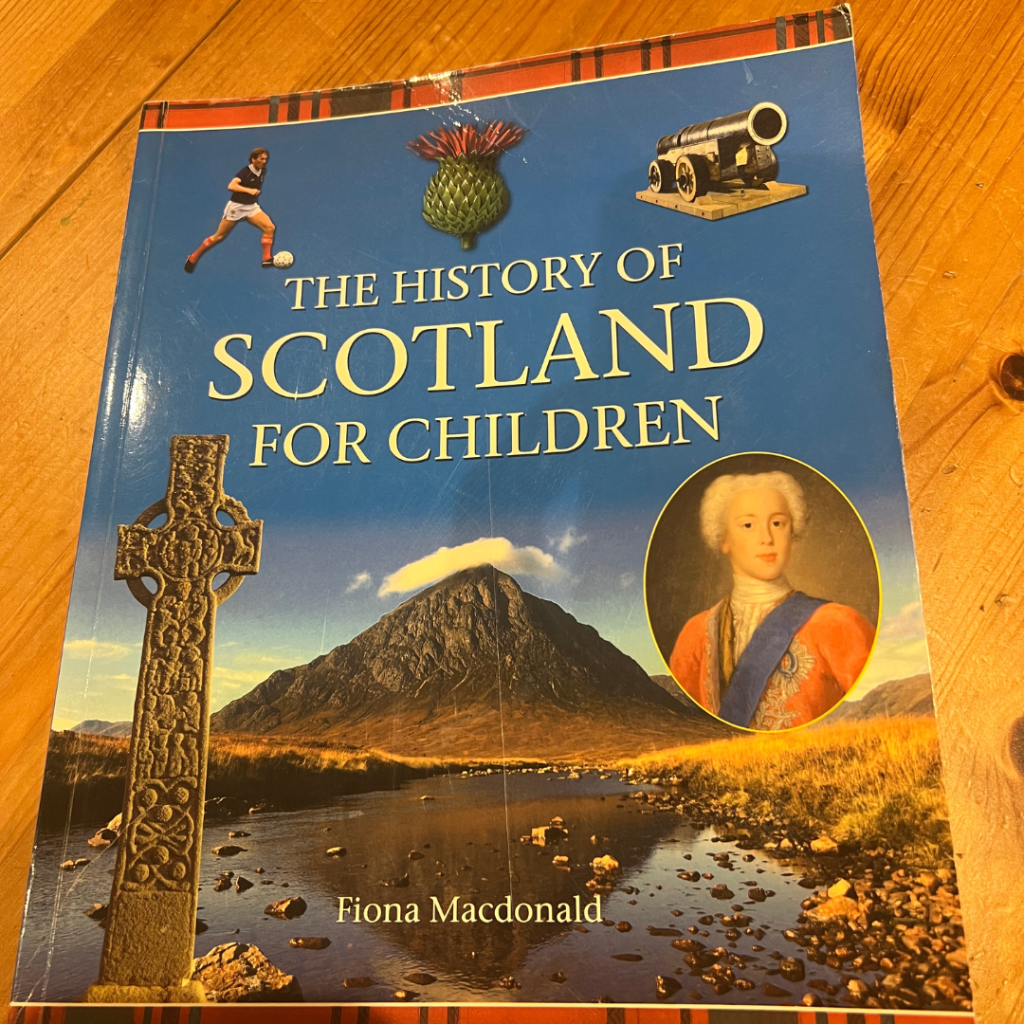
Or go for picture books written about Scotland for younger children such as the Katie Morag Stories set on the Island of Struay.
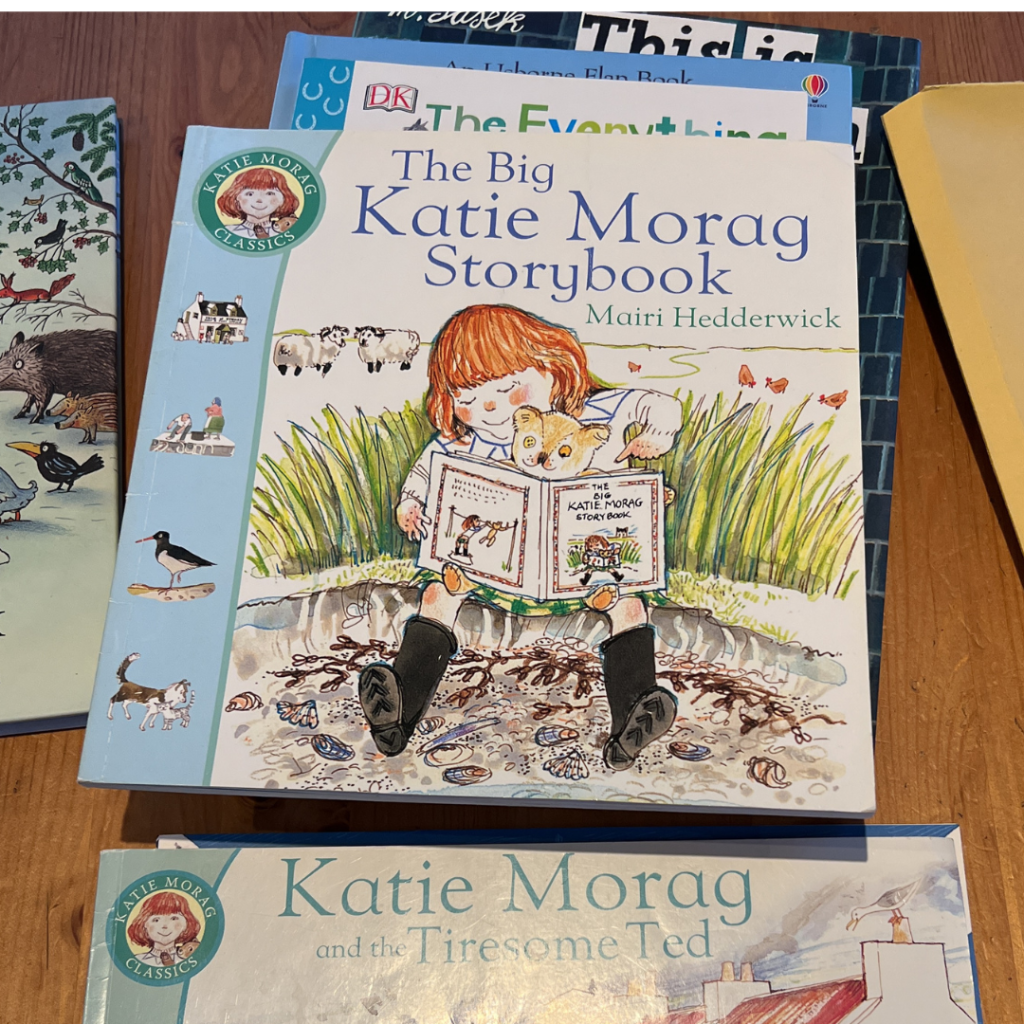
Burns Night Resources:
Gather materials for a Burns Night-themed craft, such as construction paper and markers for designing your own tartan, and ingredients for a simple Scottish recipe, such as Traditional Scottish Tablet. See below for the recipe:
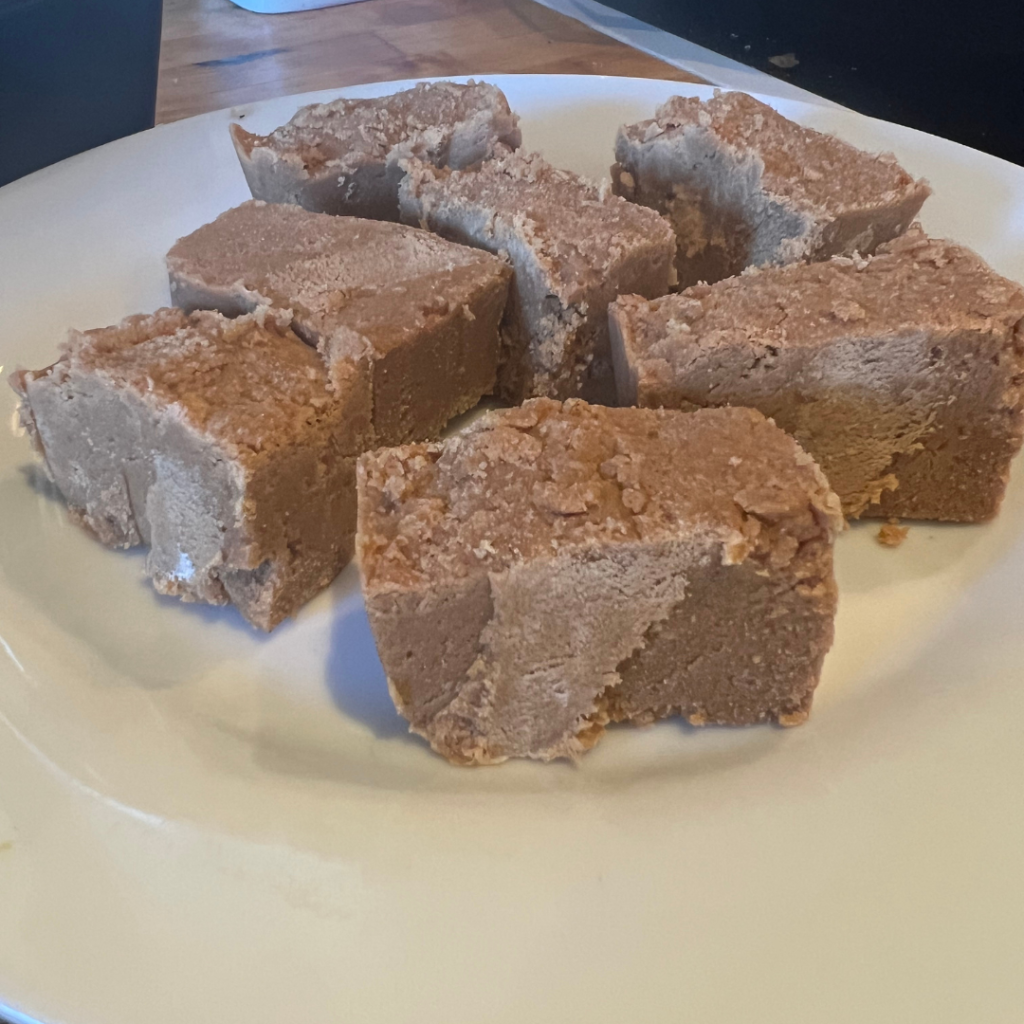
Traditional Scottish Tablet Recipe
Ingredients:
- 4 cups granulated sugar
- 1 cup unsalted butter
- 1 cup whole milk
- 1 can (14 ounces) sweetened condensed milk
- Pinch of salt
- 1 teaspoon vanilla extract
Instructions:
- Prepare the Pan:
- Line a square baking pan (approximately 9×9 inches) with parchment paper, leaving some overhang for easy removal later.
- Combine Ingredients:
- In a large, heavy-bottomed saucepan, melt the butter over medium heat. Add the granulated sugar, whole milk, sweetened condensed milk, and a pinch of salt. Stir continuously to dissolve the sugar.
- Bring to a Boil:
- Once the sugar has completely dissolved, turn up the heat to bring the mixture to a rapid boil. Stir constantly to prevent sticking or burning.
- Simmer to Soft-Ball Stage:
- Once boiling, reduce the heat to medium-low and let the mixture simmer. Use a candy thermometer to monitor the temperature. The tablet is ready when it reaches the soft-ball stage, around 240°F (116°C).
- Add Vanilla:
- Remove the saucepan from the heat and stir in the vanilla extract. Be cautious as the mixture will be extremely hot.
- Beat Until Thickened:
- Allow the mixture to cool slightly, and then beat it vigorously with a wooden spoon or an electric mixer on low speed. Continue beating until the mixture thickens and begins to lose its gloss. This may take around 10-15 minutes.
- Pour into the Pan:
- Quickly pour the thickened mixture into the prepared baking pan, spreading it evenly.
- Score the Tablet:
- While the tablet is still warm but starting to set, score it into squares with a knife. This will make it easier to cut into individual pieces once fully set.
- Allow to Cool:
- Let the tablet cool completely in the pan. Once cooled, use the parchment paper overhang to lift the tablet out of the pan.
- Cut into Pieces:
- Cut the tablet into squares along the scored lines.
- Enjoy:
- Your traditional Scottish tablet is now ready to be enjoyed! Store it in an airtight container for freshness.
This sweet and crumbly Scottish tablet is a delightful treat with a rich, buttery flavor. Perfect for sharing with friends and family, it’s a taste of Scotland’s sweet traditions. My kids love this so much it doesn’t last long in our house.
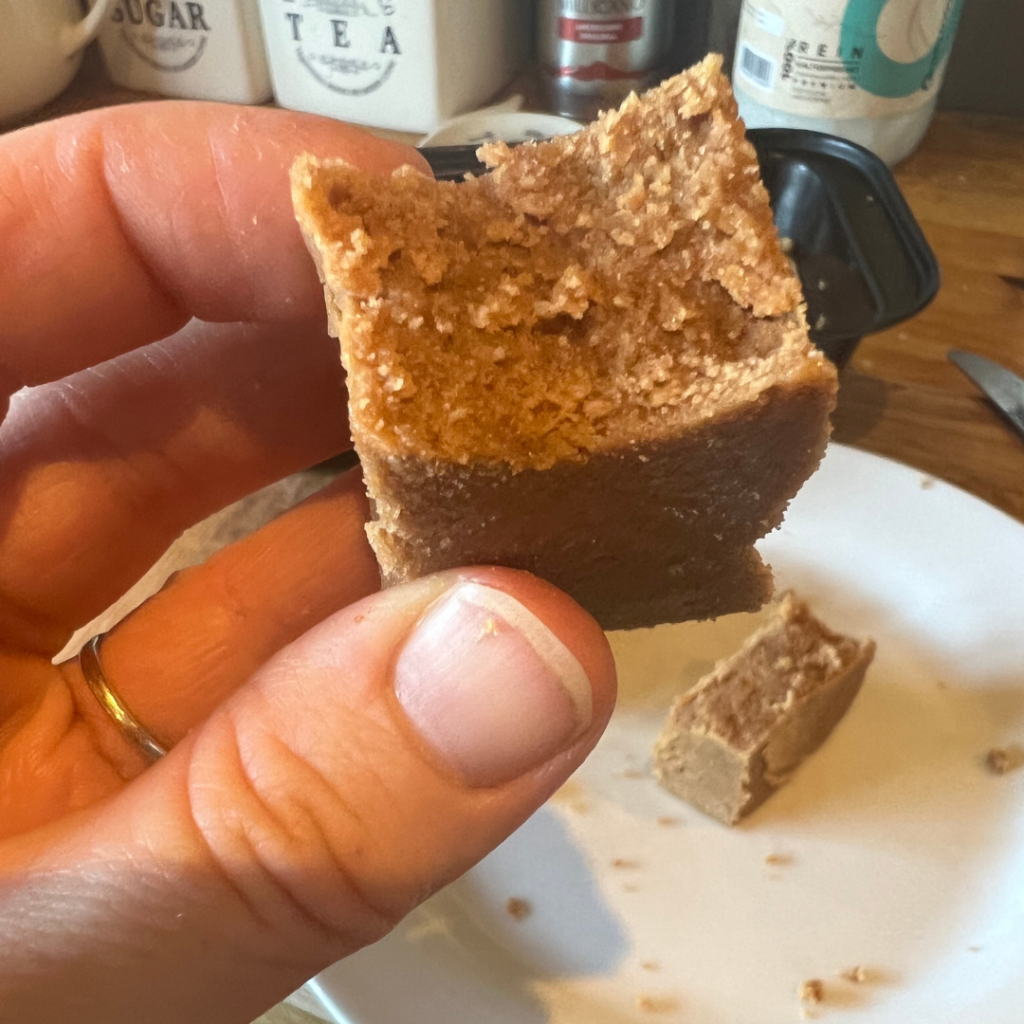
Other Basic Supplies:
- Map of Scotland
- Picture of the Scottish Flag
- Images of Scottish landmarks and animals
- Device for playing Scottish music or dance videos
SETTING UP THE LESSON:
Before starting the lesson, set up a display of Scottish imagery, including maps, pictures of landmarks like Edinburgh Castle, images of Scottish animals such as the Scottish wild cat and representations of traditional Scottish attire. These notes were what I used for deciding what to display and what to focus on.
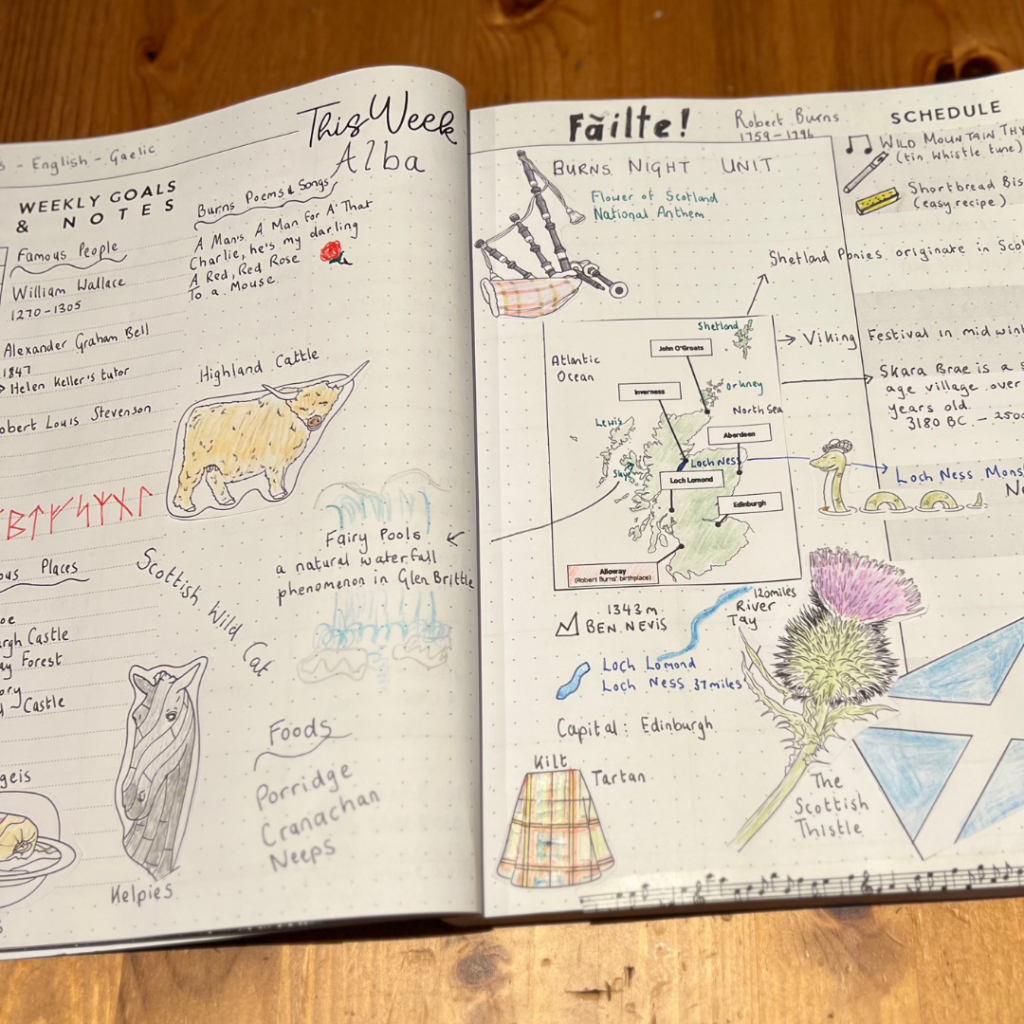
EXPLORE SCOTLAND:
Begin the learning day with a visual tour of Scotland using either your display board, books and learning notes or perhaps a video. Show images of its landscapes, famous landmarks, and introduce basic geography. Discuss the significance of kilts, bagpipes, and tartans, providing a glimpse into Scottish culture.
LEARN ABOUT ROBERT BURNS:
Introduce Robert Burns, explaining his role as Scotland’s national poet and the impact of his works. Share age-appropriate excerpts from his poems and discuss their themes.
ENJOY SCOTTISH MUSIC AND DANCE:
Engage the children in the vibrant sounds of Scotland by playing traditional Scottish music or dance videos. Encourage them to explore the rhythm and movements associated with Scottish dance.
BURNS NIGHT CRAFT OR ACTIVITY:
Get creative with a Burns Night-inspired craft or activity. Consider making Scottish flags, designing your own tartan, creating a collage of Scottish images as shown below, crafting thistles, or even preparing a simple Scottish recipe together.
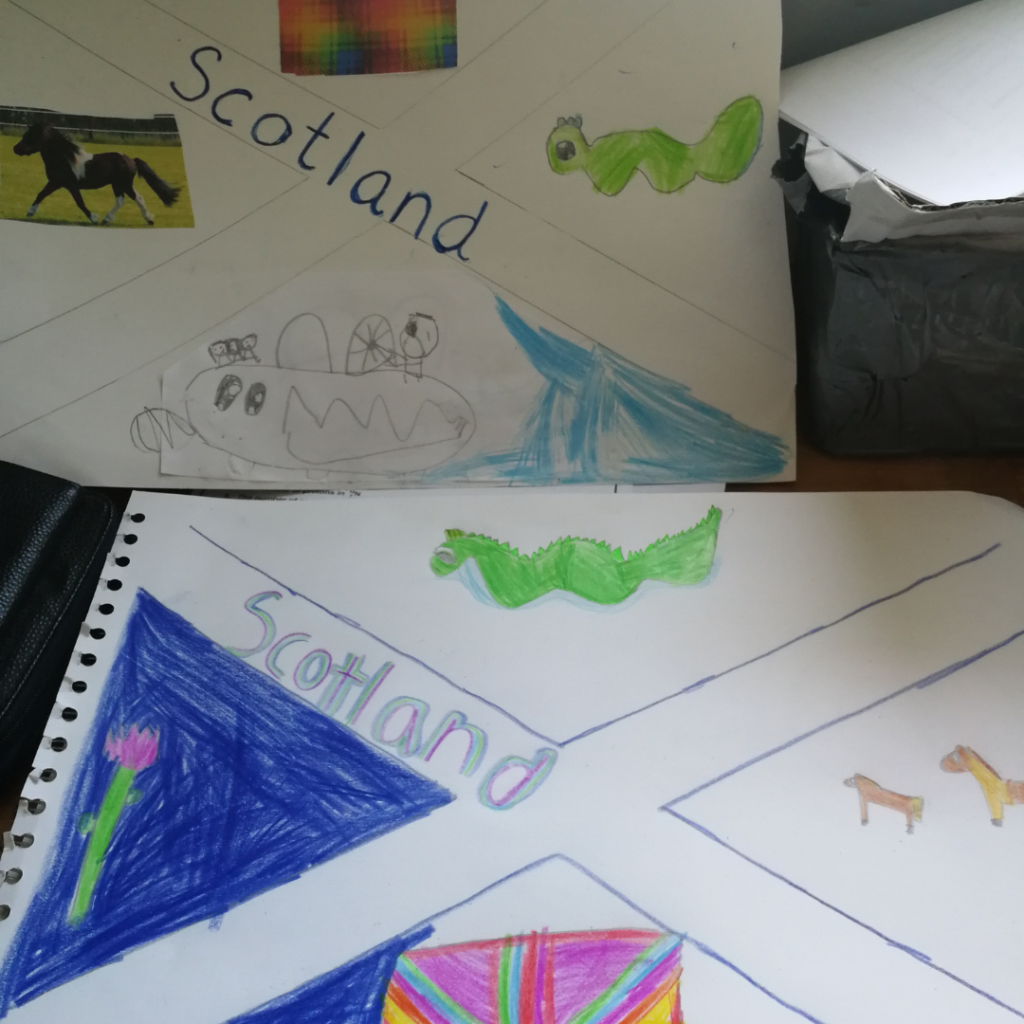
SIMPLIFIED BURNS SUPPER:
Cap off the lesson with a simplified Burns Supper experience. This can involve a special meal featuring Scottish dishes (such as haggis, neeps, and tatties) or even something simplier like a bowl of Porridge [Porage], a reading of a Burns poem, and a toast to Robert Burns.
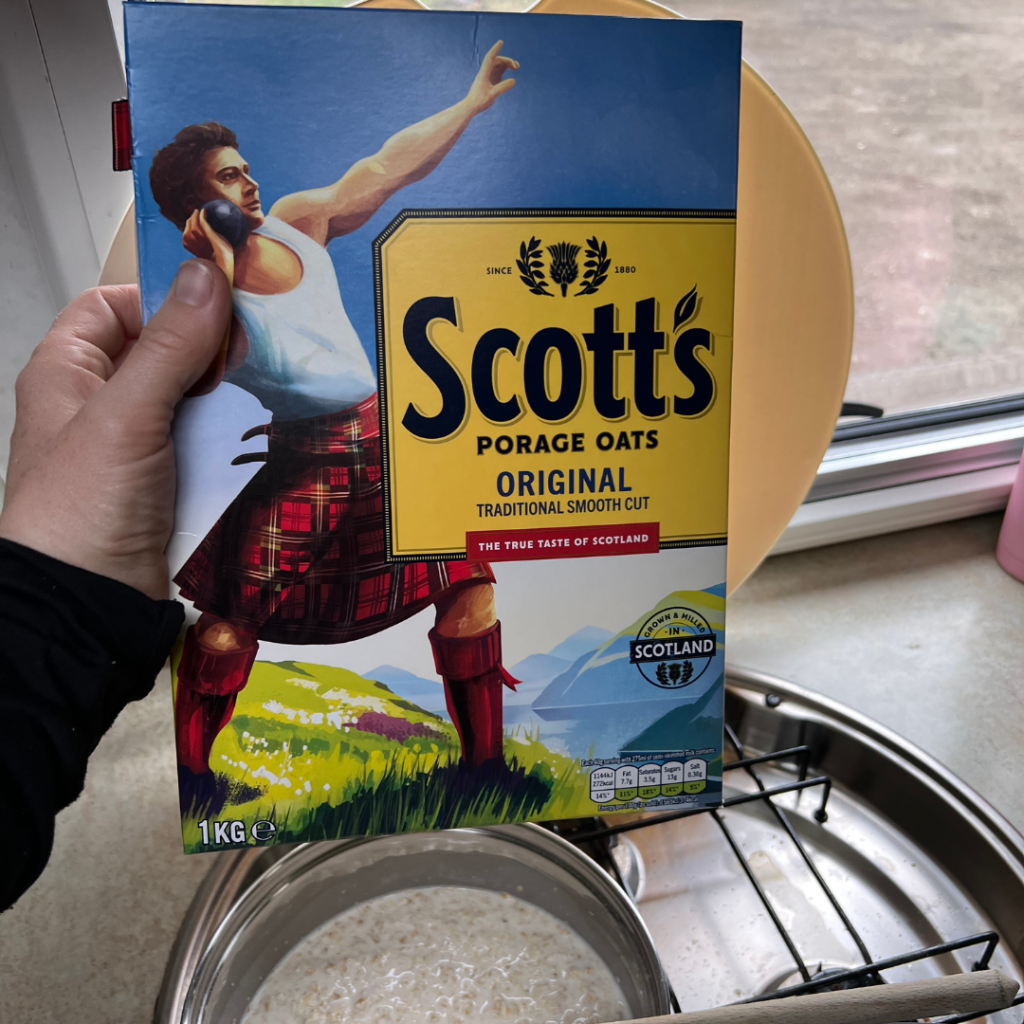
WRAP-UP AND DISCUSSION:
Conclude the lesson with a discussion about what the children found most interesting about Scotland and Burns Night. Ask if they’d like to explore more aspects of Scottish culture in future lessons.
EXTENSIONS FOR OLDER KIDS:
For older children, extend the lesson by delving deeper into Scottish history, exploring famous Scots throughout the ages, or even attempting more complex Burns Night recipes.
WHAT’S NEXT WITH LEARNING ABOUT SCOTLAND?
If this introduction to Scotland and Burns Night proves enjoyable, consider expanding the unit study to explore specific aspects like Scottish folklore, famous Scottish inventors, or the historical significance of key landmarks. Engage in further celebrations of Scottish traditions, such as Highland Games or the Edinburgh Festival.
Please share your thoughts in the comments and let me know what additional activities you would include in a day of learning about Scotland and celebrating Burns Night.
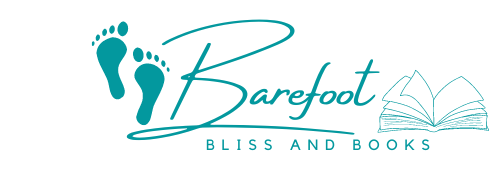
Might try that tablet, probably very sweet but tasty.
It is extremely sweet and addictive